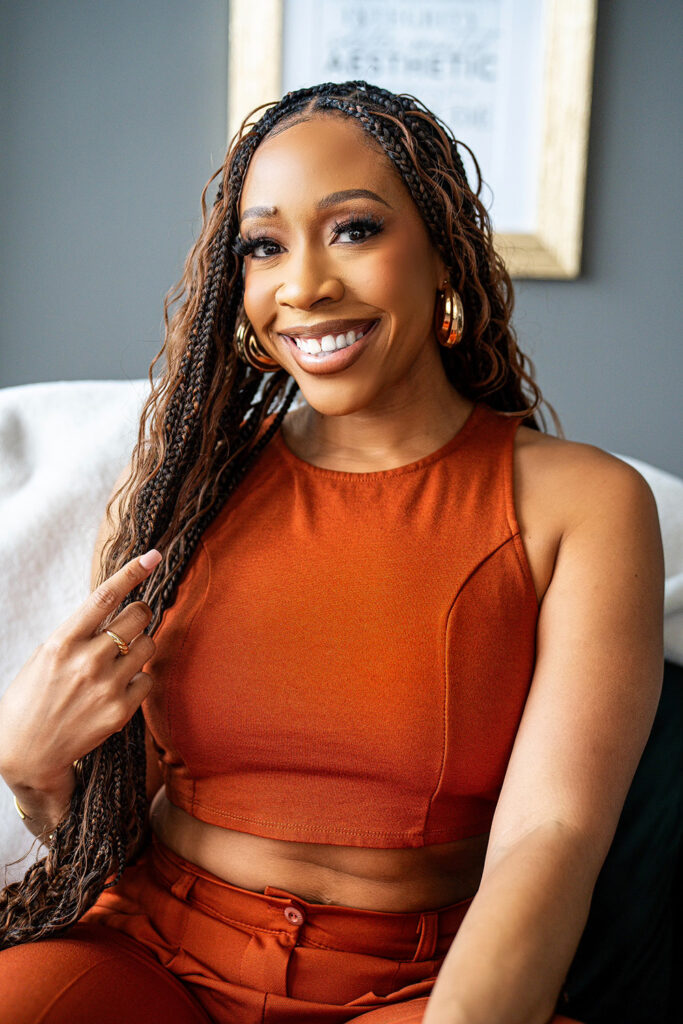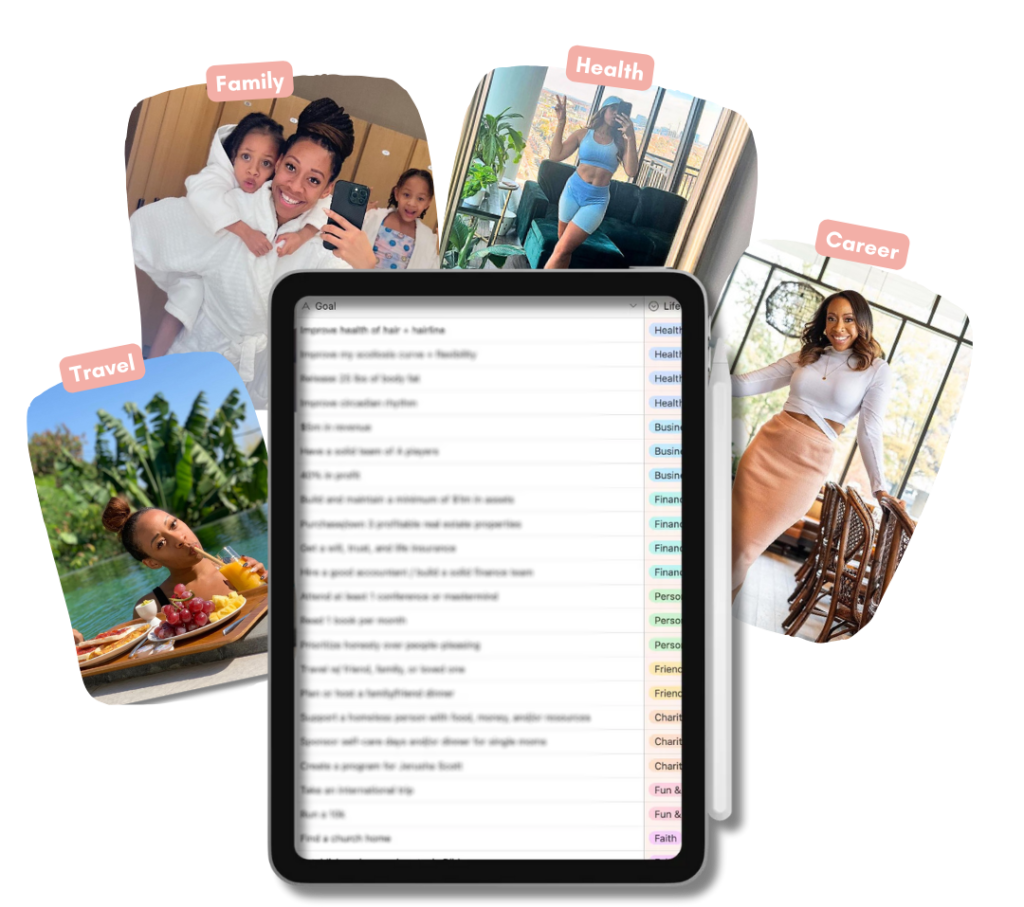
This post is part of the Content Creation Series. In each post I’ll provide an answer to the question “what goes inside of a [content type]?” First up: blog content.
The written blog post is the most basic form of content marketing. At the risk of sounding simple, content marketing is a method of marketing yourself or your products through content such as blog posts, eBooks, webinars, eCourses, masterclasses, etc. The purpose of content marketing is connecting with an audience in an organic way instead of using paid advertisements.
I use content in my business to do 3 things:
- Build my brand
- Build my email list
- Build my income
My content builds my brand when I share my expertise through experiences and storytelling. This is how I get people to trust me and recognize my voice. Consistently creating content allows me to communicate with my audience on various platforms.
Because I use content strategically, I use content to build my list by offering some of my content for free in exchange for an email address. You can learn more about how I do that here. I also create content that can be used as paid products. I believe a lot of the content I create is valuable enough to be sold. It’s just a matter of whether or not I decide to put a price tag on it and call it a product.
Blog posts have always been my ride or die, though. It’s part of my humble beginnings of building my personal brand, and I believe that if you can blog, you can pretty much dominate ANY type of content marketing platform from YouTube to Podcasting.
[Tweet “Smart content should build your brand, your email list, and/or your income.”]
The thing about blogging is that people underestimate the work that goes into it. Blogging is still a fairly new as a business model and people are truly wondering how it can be used to make money. It’s no longer just a place to rant about random thoughts. It’s a platform for you to educate and/or entertain a specific target audience. So how much content should go inside of a blog post to serve the purpose of building your brand, email list and income?
[Tweet “Blogging is a place for you to educate & entertain your audience.”]
I personally like to make my blog posts over 1,000 words (I shoot for 1,200) for a few reasons.
- First, I only blog about once a month since I provide other types of content to my audience. (I don’t believe in having to blog 3x a week to stay relevant if you’re still reaching your audience on other platforms.)
- Second, I want my blog posts to show up in search engines. The more words, the more likely it is for keywords to get picked up.
- Third, I want my audience to feel confident about the information they consume. I’d rather them skip over some portions of my blog post to get what they need rather than reading a post and feeling even more confused than when they came on my site.
Here’s the structure I recommend to write a well-written blog post:
The Introduction
- I used to be horrible at writing introductions, and I sometimes still hate writing the introduction of my blog post. I get so excited about the meat of the content that I just want to to hop right in. Never do that, though. It makes for an awkward blog post.
- Your introduction should include a little bit of backstory as to how the purpose of the blog post pertains to you and how it will be beneficial to your audience. What’s your experience with the information you’re about to share? Why is this information you’re about to share good for your reader to know?
- Your introduction doesn’t need to be lengthy (a couple of paragraphs will do), but it should be long enough that your audience is “prepped” to receive the info you’re about to share with them. It’s a chance for you to do a little storytelling and build immediate trust so they’re confident with the knowledge you’re sharing with them.
The Main Points
- The meat of your post should cover all of the details you want your reader to know. I always suggest outlining your blog post before actually writing it. Use this blog post and the Smart Content Toolbox for help with this.
- I believe people skim blog posts for the bolded and bulleted points to make a decision of whether or not they’ll read the whole thing. Create those points first then go back and add in the juicy stuff.
- While 1,200 words is fairly lengthy, keep in mind that most people run away from text heavy posts. To keep them engaged, include images to break up the text in order to make your blog posts easier to read. The three types of images I use in posts are featured image graphic, Pinterest graphics, content upgrade graphic (or product promo graphic) and occasionally a quote graphic. All of these graphics match my overall visual brand and are shareworthy for social media. It’s worth the time or money to have nicely branded graphics. You can make your own easily and affordably using Canva (which is now also a mobile app!)
- I also break up my posts with “click to tweets”. It gives my readers an opportunity to share my content more than one way. You can create a click to tweet with the WordPress plugin or you can create one at ClickToTweet.com.
The Closing
- Your closing should include two things:
- A recap of what you discussed and why it’s important
- A call to action. What is it that you want your reader to do next? I usually ask my audience to buy something (under $30) or offer something for free in exchange for an email (content upgrade). This ties into the whole strategy of blogging. Give, ask. Give away valuable content then ask for an email or money for additional premium content. Then continue giving more free content regardless.
If you write informational blog posts that you use as a marketing tool to build your blog, brand, and business (hint: you should), it’s important to be strategic. Writing lengthy blog posts with quotes, bullet points, and images, truly isn’t just for fun. Each step in your blogging process should be strategic. I can’t stress that enough.
In my Master Your Market program, the first module I teach covers processes, strategies, and systems because when you’re trying to dominate the online industry, you need to have your stuff in order. Whether you like YouTube over Written Blog Posts or Webinars over Podcasts, you HAVE to have a documented and streamlined process for your long-form and micro content mediums.
That’s why I created Smart Content Toolbox. It’s a bundle of how I lay out EVERYTHING for all of the content pieces I’ve created. You’ll see how I break down my process, what templates you should create, and how you can delegate these tasks to your [future] team.
Ready to start creating your own profitable content? Grab the Smart Content Toolbox!




This post was everything! Thanks Maya for your consistent generosity in sharing your knowledge and experiences to teach!
Thanks so much, XayLi! So glad you enjoyed the post!
This post was everything! Thanks Maya for your consistent generosity in sharing your knowledge and experiences to teach!
Thanks so much, XayLi! So glad you enjoyed the post!
I’m new to your blog (The Kichenista retweeted you) , but can already tell that I will be buying a lot of your kits. I’ve been attempting to break into blogging for a long time, and I even have my site up, but I just don’t think my brand shines through so I keep it unpublished. I hope to gain knowledge and find the confidence to share me with the world!
Thanks,
Michelle
Welcome, Michelle! I’m so happy you stumbled across my blog. Let me know how my content and products help you or if you have any questions! 🙂
xx
Maya
I’m new to your blog (The Kichenista retweeted you) , but can already tell that I will be buying a lot of your kits. I’ve been attempting to break into blogging for a long time, and I even have my site up, but I just don’t think my brand shines through so I keep it unpublished. I hope to gain knowledge and find the confidence to share me with the world!
Thanks,
Michelle
Welcome, Michelle! I’m so happy you stumbled across my blog. Let me know how my content and products help you or if you have any questions! 🙂
xx
Maya
Great post, Maya! I struggle with introductions too lol. I’ve definitely been missing having something to offer at the end. Will work on that, thanks!
Great post, Maya! I struggle with introductions too lol. I’ve definitely been missing having something to offer at the end. Will work on that, thanks!
This is a fantastic post. I continually forget to work on the introduction when really, that should be the part I write first!
Maya, I’ve been an avid follower since I heard you speak on the Teachable Summit. You are amazing and so very beautiful as well! Anyways, can you share with me more about how you choose your featured image vs pinnable image? I have been making my featured image the pinnable to this point. Maybe I need to change that? Can you give me your thoughts? Thanks so much! http://www.jameemaree.com